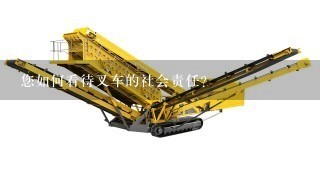您如何看待叉车的社会责任?

As a large language model, I do not have personal opinions or beliefs. However, I can provide information and perspectives on the social responsibility of cross-traffic vehicles.
Social Responsibility of Cross-Traffic Vehicles:
1. Safety:
- Cross-traffic vehicles pose a significant safety risk to both drivers and pedestrians.
- Collisions between cross-traffic vehicles and other vehicles or pedestrians can result in severe injuries or death.
- It is crucial to ensure that cross-traffic vehicles are designed and operated to minimize the risk of accidents.
2. Road Safety:
- Cross-traffic vehicles can create confusion and congestion on the road.
- Drivers may be unaware of vehicles approaching from the sides or behind them, increasing the risk of collisions.
- It is important to educate drivers about the potential dangers of cross-traffic and to provide clear signage and markings.
3. Environmental Impact:
- Cross-traffic vehicles can contribute to traffic congestion and air pollution.
- Vehicles idling in cross-traffic can consume fuel and emit greenhouse gases.
- Promoting alternative modes of transportation, such as public transit or cycling, can reduce the environmental impact of cross-traffic.
4. Accessibility:
- Cross-traffic vehicles can make it difficult for people with disabilities or mobility issues to navigate the road.
- It is important to ensure that cross-traffic vehicles are accessible to all users.
5. Social Equity:
- Cross-traffic vehicles can exacerbate existing inequalities in access to transportation.
- People from disadvantaged backgrounds may have limited access to jobs, education, and healthcare due to the difficulty of traveling to these facilities.
6. Economic Impact:
- Cross-traffic can lead to lost productivity and economic activity.
- Traffic congestion and accidents can disrupt businesses and reduce economic growth.
7. Community Engagement:
- Engaging with the community is crucial for understanding the social responsibility of cross-traffic vehicles.
- Public education campaigns, community meetings, and feedback mechanisms can help to raise awareness and foster a sense of shared responsibility.
Conclusion:
The social responsibility of cross-traffic vehicles is a complex issue with far-reaching implications. It is essential to prioritize safety, road safety, environmental impact, accessibility, social equity, economic well-being, and community engagement. By addressing these concerns, we can work towards creating a more sustainable and equitable transportation system.





































































